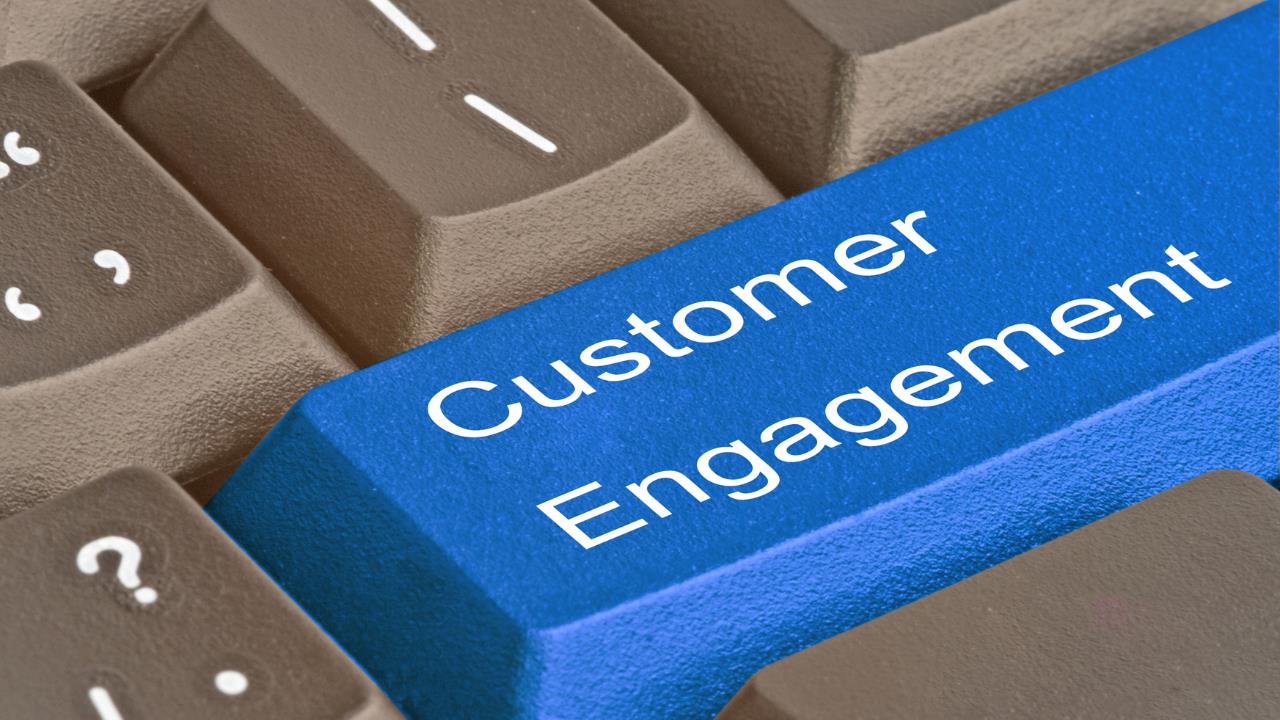||

Customer 360 is a business idea dealing with how SMBs understand their target markets. Generally, it’s all about putting together customer data so you can reach out to them effectively.
Customer 360
Small Business Trends talked with Brent Leary Co-founder and Partner of CRM Essentials. He supplied an overview of why this is important to your SMB success.
“It seems like the idea has been around forever,” he says. “It’s like the Holy Grail of business. It’s about collecting data to find out everything that you can about a customer.”
Customer Data Ocean
He says there’s quite a few different tributaries feeding the customer data ocean so you can get insights.
“Customer 360 can start before they’re a customer. You’re looking at things like how they interact with you and what kind of things they’re looking for.”
Then SMBs need to add in other factors including how customers like to be engaged with and what their reactions are to your goods and services. And those are just a few more of the ingredients that go into the mix.
“It includes everything that you need to know about a customer from a sales, marketing and service perspective,” he says.

The Digital Age
Sound like a confusing hodgepodge for a busy entrepreneur? Leary supplies focus and a path forward. There’s lots more information to sort through in the digital age too.
One of the big tools used for Customer 360 is CRM. But early on it was only a place to store contact information. Now Leary says the cloud and the latest CRM companies like Zoho and Salesforce are front and center. They are able to help small businesses leverage and makes sense of this information.
“These companies make these applications affordable to use. They take out all the complexity of trying to turn the data into insights,” he says.

The Steps
Leary breaks the process down into steps highlighting how these tools work. Look for a company that can do all of the following.
“The first thing is being able to find the data,” he says adding it can come from several different sources. These sources include social media, messaging apps and even website activity to name just a few. Statistics and numbers from any one source can give you some insights. The first idea on the road to Customer 360 is to get all this information in one place.
Get Insights
The next step is to be able to find insights and patterns that you can’t see on your own.
“You also need to get these insights at the right time to make a connection with the customer or prospect,” Leary says. There’s more. After you get insights and make connections you need to analyze them to see what works and what doesn’t.
If that sounds confusing it shouldn’t. He isn’t suggesting small business owners go it alone. For one thing, you can use automation to pull all the information together in one central place. Here’s some tools that you can use.
Leary supplies a good tip when you’re trying to sort through all of your options here.
“You can set up your profile with some of these and they’ll start adding information about the folks that are already in your system,” he says. “These tools are out there to make the process of data entry easier.”
You’re building a Customer 360 foundation when you’re integrating data into your CRM system. But there are other new innovations you can’t afford to ignore. The latest digital tools that point you to customers most likely to buy.
How Artificial Intelligence Fits In
“Over the last couple of years, you’ve been hearing a lot about AI and Machine Learning,” Leary says. He adds this is the latest piece of the puzzle and one you can’t do without. “AI and Machine Learning analyze the data in a way the human brain just can’t.”
These systems can take huge amounts of data and continually analyze it for the insights your SMB needs. One of the best things is the system is continually working for you. You tell them what works and what doesn’t and Machine Learning builds on that.
He also stresses that these new digital ‘brains’ aren’t really a threat. They free us up to build customer relationships based on the analytics they provide. To do what we’re best at—the human part.
“Artificial intelligence might provide the insight,” Leary says, “but we take that insight and deliver it in a human way to a potential customer. That’s the whole Customer 360 thing.”
Enhancing Customer Engagement
In addition to the concept of Customer 360, small businesses can benefit from strategies and technologies that focus on enhancing customer engagement. This involves creating meaningful interactions and relationships with customers to drive loyalty and sales. Here are some key considerations and tactics for boosting customer engagement:
- Personalization: Tailor your interactions and communication to the specific needs and preferences of individual customers. Use data collected through Customer 360 efforts to offer personalized product recommendations, discounts, or content.
- Multi-Channel Engagement: Engage with customers through various channels, including social media, email, chat, and phone. Ensure consistency in your messaging and branding across these channels.
- Feedback and Surveys: Collect feedback from customers regularly. Use surveys, feedback forms, or online reviews to understand their opinions and areas for improvement. Act on this feedback to show that you value their input.
- Customer Support: Provide excellent customer support. Respond promptly to inquiries and resolve issues efficiently. Consider implementing chatbots or automated support systems to handle common queries.
- Content Marketing: Create valuable and informative content that addresses your customers’ pain points and interests. This can include blog posts, videos, webinars, or downloadable resources.
- Loyalty Programs: Implement loyalty programs that reward repeat customers. Offer incentives such as discounts, exclusive access, or rewards points to encourage continued engagement.
- Community Building: Foster a sense of community among your customers. Encourage them to connect with each other through forums, social media groups, or events related to your products or services.
- Email Marketing: Utilize email marketing campaigns to keep customers informed about new products, promotions, and company updates. Segment your email list to send targeted messages.
- Data Analytics: Continually analyze customer data to identify trends and behaviors. Use this information to refine your engagement strategies and make data-driven decisions.
- Mobile Optimization: Ensure your website and communication channels are mobile-friendly. Many customers engage with businesses through smartphones and tablets.
- Embrace Automation: Invest in marketing automation tools to streamline repetitive tasks and nurture leads. Automation can help you maintain consistent engagement even when resources are limited.
- Social Responsibility: Show your commitment to social and environmental causes. Many customers appreciate businesses that support positive initiatives, which can enhance their perception of your brand.
| Consideration/Tactic | Description |
|---|---|
| Personalization | Tailor interactions and communication to individual customer needs and preferences. |
| Multi-Channel Engagement | Engage customers through various channels like social media, email, chat, and phone while maintaining consistency. |
| Feedback and Surveys | Collect and act on customer feedback through surveys, forms, and online reviews. |
| Customer Support | Provide prompt and efficient customer support, potentially using chatbots or automated systems. |
| Content Marketing | Create valuable content addressing customer pain points and interests, such as blog posts, videos, and webinars. |
| Loyalty Programs | Implement programs rewarding repeat customers with incentives like discounts and exclusive access. |
| Community Building | Foster a sense of community among customers through forums, social groups, and related events. |
| Email Marketing | Utilize email campaigns to inform customers about new products, promotions, and updates with targeted messages. |
| Data Analytics | Continuously analyze customer data to identify trends and behaviors for data-driven decision-making. |
| Mobile Optimization | Ensure mobile-friendly websites and channels, as many customers engage through smartphones and tablets. |
| Embrace Automation | Invest in marketing automation tools for streamlined tasks and consistent engagement, even with limited resources. |
| Social Responsibility | Showcase commitment to social and environmental causes, enhancing your brand's perception. |

Data Security and Compliance
While the collection and utilization of customer data are essential for Customer 360 and effective engagement, it’s equally crucial for small businesses to prioritize data security and compliance with privacy regulations. Protecting customer information not only builds trust but also safeguards your business from potential legal and reputational risks. Here are key considerations in this regard:
- Data Encryption: Implement strong encryption protocols to protect customer data both in transit and at rest. This ensures that sensitive information remains confidential, even in the event of a security breach.
- Access Controls: Restrict access to customer data on a need-to-know basis. Only authorized personnel should have access to sensitive information, and their permissions should be regularly reviewed and updated.
- Data Backup and Recovery: Maintain regular data backups to prevent data loss due to system failures or cyberattacks. Establish a robust recovery plan to minimize downtime in case of a data breach.
- Privacy Policies: Clearly communicate your data handling practices to customers through privacy policies. Ensure that customers are informed about how their data is used, and obtain their consent for data collection when necessary.
- Compliance with Regulations: Stay informed about data protection regulations applicable to your industry and location. GDPR, CCPA, and other regional laws may impose specific requirements on data handling and disclosure.
- Employee Training: Train your employees on data security best practices. Human error is a common cause of data breaches, so educating your staff can significantly reduce risks.
- Vendor Security: If you use third-party vendors or cloud services, ensure they have robust security measures in place and comply with relevant data protection regulations. Review contracts to clarify data ownership and responsibilities.
- Incident Response Plan: Develop a comprehensive incident response plan to address data breaches promptly and effectively. This should include steps for notifying affected customers and relevant authorities as required by law.
- Customer Data Portability: Be prepared to provide customers with their data upon request. Many privacy regulations grant individuals the right to access and transfer their data, so have processes in place to facilitate this.
- Regular Audits: Conduct regular security audits and assessments to identify vulnerabilities and weaknesses in your data protection measures. Address any issues promptly to maintain data integrity.
| Consideration | Description |
|---|---|
| Data Encryption | Implement strong encryption protocols to protect customer data during transmission and while at rest. |
| Access Controls | Restrict access to customer data, allowing only authorized personnel to view sensitive information. |
| Data Backup and Recovery | Maintain regular data backups to prevent data loss and establish a recovery plan to minimize downtime. |
| Privacy Policies | Clearly communicate data handling practices to customers through privacy policies, ensuring transparency. |
| Compliance with Regulations | Stay informed about data protection regulations applicable to your industry and location and comply with them. |
| Employee Training | Train employees on data security best practices to reduce the risk of human error leading to data breaches. |
| Vendor Security | Ensure third-party vendors and cloud services have robust security measures and comply with data regulations. |
| Incident Response Plan | Develop a comprehensive plan to address data breaches promptly, including customer and authority notifications. |
| Customer Data Portability | Be prepared to provide customers with their data upon request, in line with privacy regulations. |
| Regular Audits | Conduct periodic security audits to identify vulnerabilities and weaknesses and promptly address them. |

Conclusion
The concept of Customer 360 presents small businesses with a powerful framework for understanding and engaging with their target markets comprehensively. By collecting and analyzing customer data from various sources, businesses can gain invaluable insights into customer behaviors, preferences, and needs. Furthermore, with the aid of modern CRM systems and emerging technologies like artificial intelligence and machine learning, this data can be transformed into actionable strategies that drive customer satisfaction and loyalty.
However, it’s essential to recognize that the journey towards Customer 360 doesn’t end with data collection and analysis alone. Small businesses must also prioritize customer engagement as a complementary strategy. Personalization, multi-channel communication, excellent customer support, and community building are among the key tactics that foster meaningful interactions and long-term relationships with customers.
In this digital age, where customers have more choices than ever, the combination of Customer 360 and effective engagement strategies can set small businesses apart. By leveraging technology and human touch in harmony, businesses can not only understand their customers but also deliver the personalized experiences and value that today’s consumers expect. Ultimately, this holistic approach to customer management can drive growth, loyalty, and success for SMBs in an increasingly competitive marketplace.
Image: Depositphotos.com
This article, "What is Customer 360 and How Can It Help Your Business?" was first published on Small Business Trends
||----------------------------------------------------------------
By: Rob Starr
Title: What is Customer 360 and How Can It Help Your Business?
Sourced From: smallbiztrends.com/2023/09/customer-360.html
Published Date: Mon, 25 Sep 2023 11:20:13 +0000
Did you miss our previous article...
https://coachingbusinessowners.com/growth/what-is-an-nft






